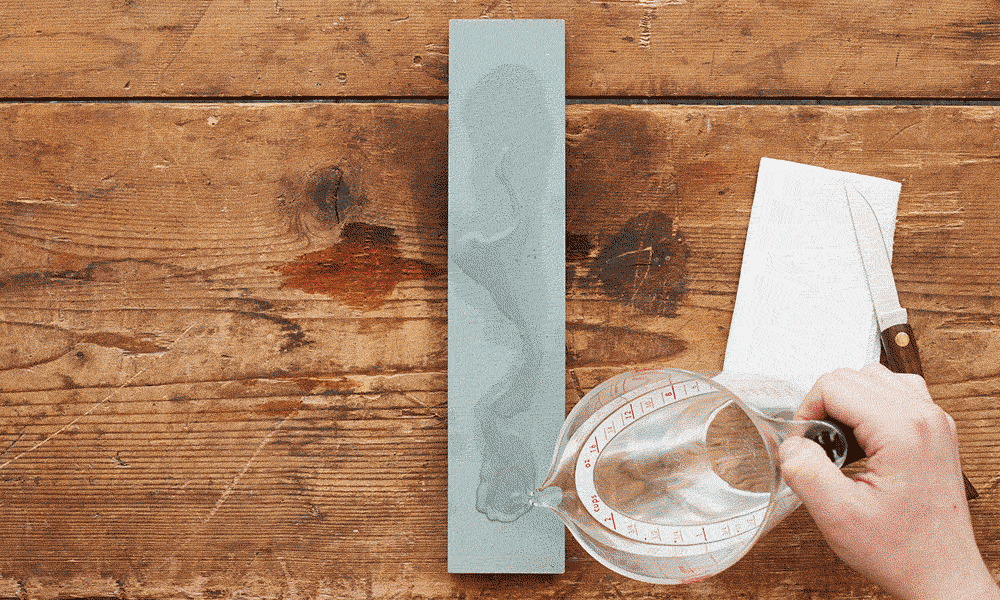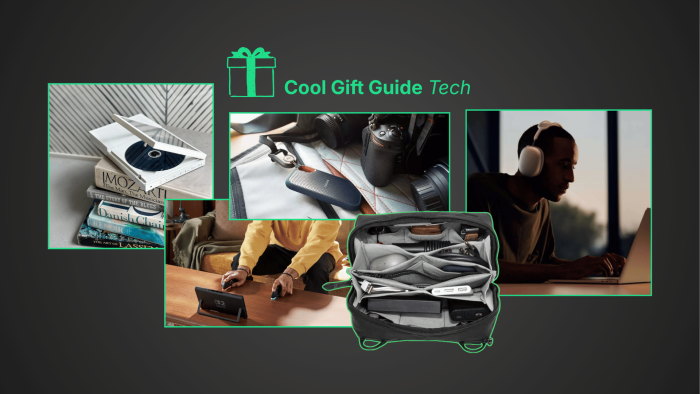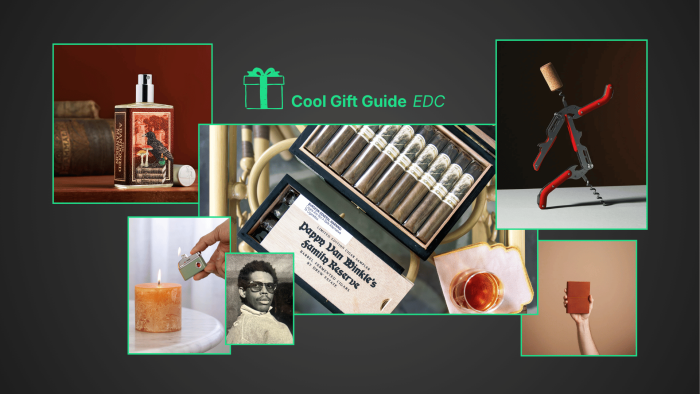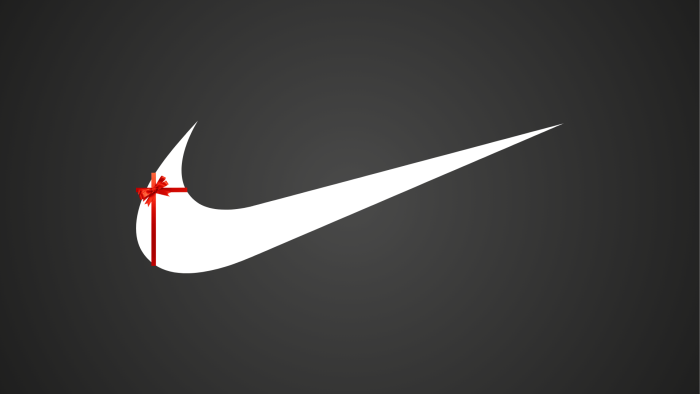It’s often said that a dull knife is more dangerous than a sharp one. While we’d argue all knives are dangerous in their own right, there is some truth to the old line. Because a dull, jagged blade doesn’t glide as easily, it has a tendency to snag and get caught in the material you’re cutting. When this happens, many continue on, push harder, which can lead to slips, nicks, and lost digits. For this reason, many people keep their kitchen set sharp—but what about the pocket knife you carry every day? Sharpening your EDC knife is essential, yet it’s rarely done. Don’t know how to start or what to buy? Here’s how to sharpen a pocket knife:
What To Buy
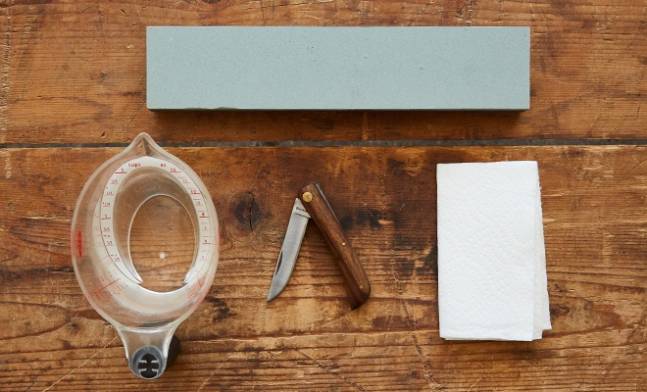
Just like for your $150 Wusthof chef’s knife, there are plenty of different tools out there to help you sharpen your pocket knife. But most are completely unnecessary. Skip the $100 electric sharpeners and other expensive gadgets and opt for a sharpening stone, which is a simple number that’s tried and true.
Now, you may have just jumped to Amazon to find a whetstone and been overwhelmed by the number of options. Yes, there are a lot. Ceramic whetstone. Diamond stone. Sharpening surfaces in different grits. Just know that all these stones work (primarily) the same way. No matter which one you choose, they’ll all be able to sharpen your pocket knife.
Here are a few we recommend:
- Winco 12″ Fine/Grain Sharpening Stone (USED BELOW) – $12
- EZE-LAP Fine Diamond Pocket Stone – $10
- Spyderco Double Stuff Stone – $27
- Opinel Natural Lombardi Sharpening Stone – $18
- Dan’s Translucent Pocket Knife Sharpening Stone Whetstone – $23
- Fallkniven DC4 – $19
If you’d rather something besides a sharpening stone, there are other options. Even if they aren’t all practical to carry around or quite as simple. While a honing steel is typically used for larger kitchen knvies, they will certainly work for sharpening your pocket knife. You could go with a pocket gadget like the one Smith’s offers. Still, for our money, a sharpening stone, or a whetstone, is simple and perfect for EDC gear and pocket knives.
Why Do I Need to Sharpen My Pocket Knife?
Right out of the box, you should expect your new knife to be pretty dang sharp. But after several uses, you’ll notice it doesn’t cut as smoothly. Sharpening your pocket knife is simply part of the general upkeep your blade needs. There’s nothing more frustrating than attempting to slice through a block of cheese on a camping trip or trying to open a package and getting that dull blade resistance. So, even though sharpening your pocket knife is a bit of a chore, it’s an essential part of upkeep.
Ask enough folks and they’ll likely all tell you a different method of how to sharpen a pocket knife. Whatever method you choose, just make sure you do it. Whether you invest in a pricey electric option, drop off your knives at your local hardware store, or bust out the whetstone, be sure to take time to sharpen your knife.
What Do I Need to Do Before I Sharpen My Pocket Knife?
Before you go swiping your pocket knife up and down your stone, it’s best you wet the stone you’re using. While it’s not always necessary, wetting your sharpening stone helps keep it cool while you sharpen, and thus prevents the knife from warping in any way from heat. The lubricant also helps remove the tiny particles and rubble created when you sharpen that could prevent you from getting a fine edge. Lubricants range from oils sold specifically for sharpening stones to your own damn spit. We recommend either mineral oil or just water. Tap water should work fine but filtered water will ensure there aren’t any excess minerals present. If you want to buy a specialty oil, that’s totally fine, but we’ve found that water works just fine.
We also recommend giving your pocket knife a proper cleaning before sharpening. Soap and water always does the trick. Just make sure to let the blade fully dry before sharpening.
How to Sharpen a Pocket Knife in 6 Steps
1. Wet Your Sharpening Stone
Like we said earlier, you don’t absolutely need to do this, but it is recommended. Whether you’re going to apply some specialty knife sharpening oil or simply pour a bit of water, now’s the time to do so. If you’re using a stone with a rough side and a fine side, start with the rougher side.
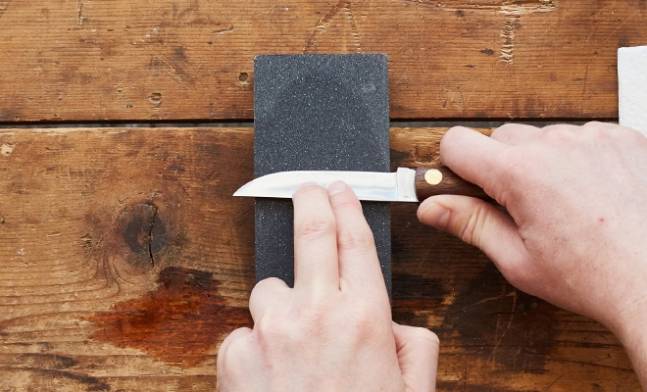
2. Find the Proper Blade Angle
This is the trickiest part for sharpening a pocket knife. But, with a little practice, you’ll have this locked in. You’re going to want to hold your knife at an angle while sharpening it. That angle depends on the knife you’re sharpening, and it can range from about 15° to 30°. Finding the bevel, or sharpening angle, can take some practice. But you should be able get it by feel. If you are struggling, you can contact the knife maker and ask for the info.
3. Sharpen Your Pocket Knife
Start with the knife at one end of the stone holding it so the blade’s edge is facing away from you. Pull the knife toward yourself while trying to keep the angle. As you reach the end, glide the knife down so you hit every curved part of your blade. Repeat 10 times. Flip blade over and repeat 10 times.
4. Use the Fine Side of the Stone
If you purchased a stone with one course side and one fine side, flip the stone over and repeat from Step 1.
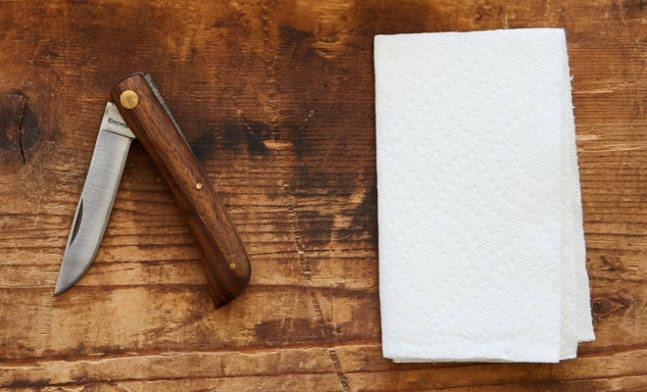
5. Wipe the Blade Clean
Use a clean dish cloth or towel to carefully wipe the blade.
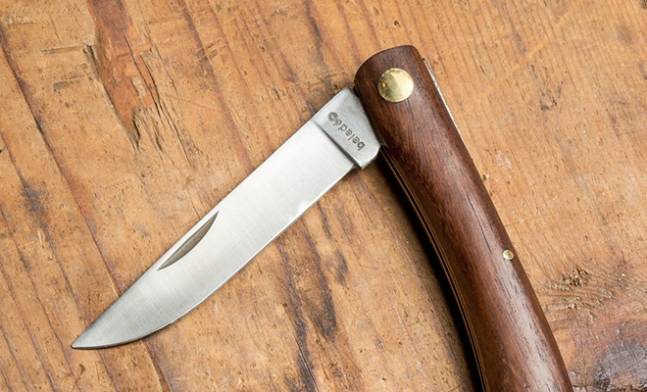
6. Use Your Pocket Knife
And that’s all you need to know on how to sharpen a pocket knife! Simple right? Your freshly sharpened pocket knife will function better than it has for some time. Just remember to sharpen after every few uses.
Want to read more about the pocket knife care? Click here for Cool Material’s Guide to Pocket Knives.

